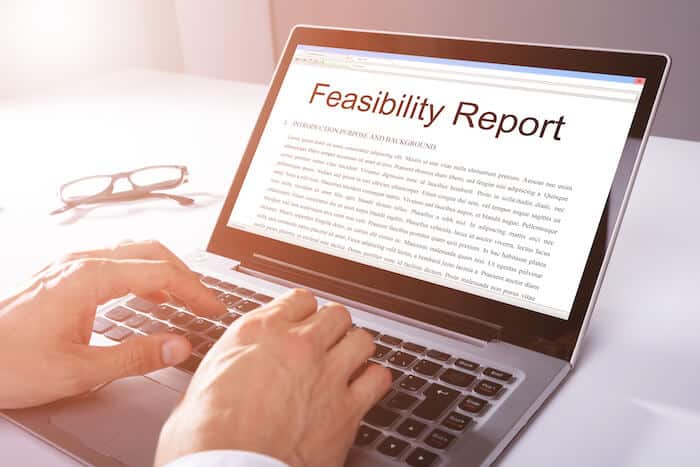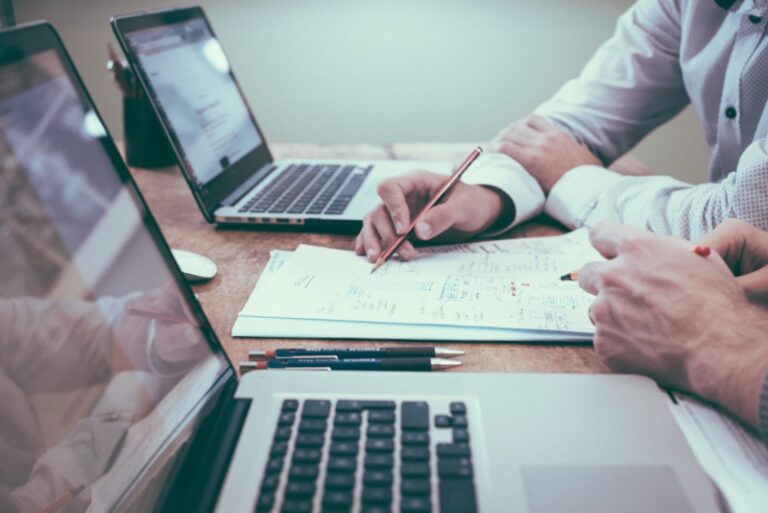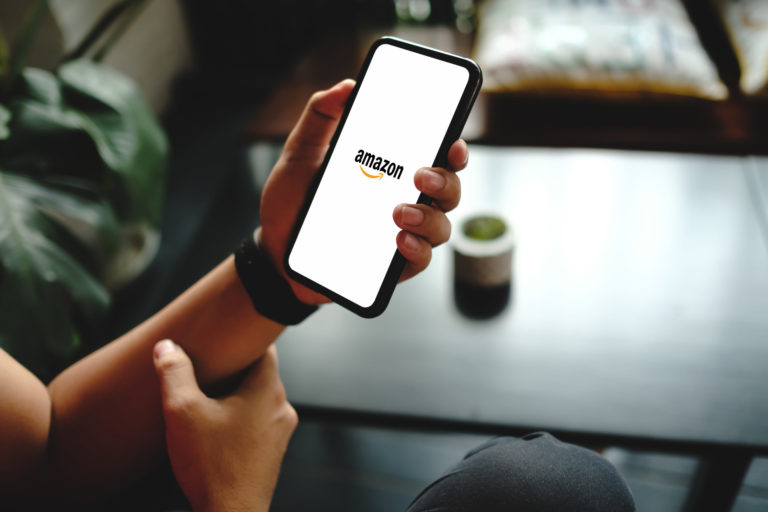You’ve finished your project outline, and initial market research reveals strong demand. You’re confident in the business idea, and you think you’ve got a successful product on your hands.
The next step is a complete product development process, right?
Not so fast.
You could also cross a busy street blindfolded and make it across unharmed, but the odds aren’t good. The same is true about jumping into new product development without a strong understanding of the risks and opportunities you face.
We recommend improving your potential for success with a feasibility study.
In this article, we’ll cover why and how to conduct a feasibility analysis for new product development. By the end, you’ll know where to start, what to expect, and how critical this step is for maximizing your return on investment.
What Is A Feasibility Study?
A feasibility study is an assessment to determine if your project or product idea is viable. It helps you understand the potential challenges, costs, and chances of success before you dive into development.
A feasibility study guides you in making informed decisions by examining factors like technical feasibility, financial projections, market analysis, and operational capabilities. This crucial step saves you time and resources, ensuring your efforts are directed toward projects with the highest likelihood of success.
Types of Feasibility Studies
Understanding the different types of feasibility studies is crucial for comprehensive project evaluation. Each type focuses on a specific aspect of your project, ensuring a thorough assessment from every angle.
Technical Feasibility
Technical feasibility examines whether the technology needed for your project exists and if your team has the necessary skills to implement it. This study evaluates:
- Technological requirements and resources
- Potential technical issues and constraints
- Availability of skilled personnel
Addressing these factors can help you determine whether your project is technically viable and identify any technical hurdles early on.
Operational Feasibility
Operational feasibility assesses whether your organization can support the project operationally. This includes:
- Organizational structure and staffing needs
- Operational capabilities and processes
- Day-to-day management and logistics
This type of study ensures that your business operations can handle the new project and that it fits within your current systems and workflows.
Financial Feasibility
Financial feasibility focuses on the economic aspects of your project. It evaluates:
- Cost implications and financial projections
- Return on investment and profitability
- Funding requirements and financial risks
This study helps you understand your project’s financial viability, ensuring that it is economically sensible and sustainable in the long run.
Market Feasibility
Market feasibility analyzes the market environment for your product. It includes:
- Market survey methods and customer segmentation
- Competitor analysis and market trends
- Potential market share and target customers
This type of study helps you gauge the demand for your product and identify the best strategies to capture your target market.
Legal Feasibility
Legal feasibility ensures your project complies with all legal requirements. It examines:
- Regulatory constraints and compliance needs
- Intellectual property considerations
- Legal risks and mitigation strategies
Addressing legal feasibility can prevent potential legal issues and ensure your project adheres to all relevant laws and regulations.
Evaluating Feasibility For The 6 Steps Of Product Development
Let’s start with the six standard phases for new product development (NPD) and what a feasibility study looks at for each:
1. Product Ideation And Research
For the ideation portion of the process, the study will evaluate and make recommendations on the availability of the right industrial designers and the clarity of the product vision. Then for research, it will assess what type of research is needed, how much effort will be required, and the availability of key information. This is also where you take an initial look at the intellectual property (IP) landscape.
The most important takeaway is how much you should invest in ideation and research to be successful. Outputs include cost and schedule estimates and suggestions for further research.
2. Product Design
Product design is critical to your product’s success, so it needs a long, hard look. This portion of your feasibility study evaluates the effort required and the technical feasibility of your product idea. It should also explore what type of technical resources your design and engineering team will need.
Is your proposed project a “convert-a-napkin-sketch-into-drawings” or “bring-in-the-hardcore-nerds” effort? Because good design is an iterative effort, it should also estimate the best- and worst-case number of design cycles needed. The study will also delve into the schedule and the risks within the schedule, recommend verification and validation testing requirements, and identify when prototyping will be needed.
The most important takeaway is understanding what technical challenges — and potential failure points — you will face. Outputs include a cost estimate for the product design and a list of potential failure modes.
3. Product Sourcing Assessment
The goals of the sourcing step in the NPD process are to evaluate if there are people who can make your product, document the information they will need to produce good quotes and production plans, and where you should consider manufacturing.
The most important takeaway is an assessment of how hard or easy it will be to find a production partner. Outputs include location suggestions and recommendations on the type of manufacturing partner you should look for.
4. Production Management
A failure at any step in the product development process is painful. A failure in manufacturing can be catastrophic because you are so late in the process, and fixing problems is a massive drain on your financial resources. A feasibility study will dig deep into production. Since you don’t have a production partner yet, it looks at typical failure modes in production around supply chain, quality, and production speed. It should evaluate the balance between labor-intensive and automated production. The study will calculate estimates for cost and schedule, capture dependency, and identify potential problems with the probable manufacturing process.
The most important takeaways are the potential points of failure and recommended backup options. Outputs include estimated production costs with a basic production schedule and feedback from manufacturing engineers.
5. Product Logistics And Compliance
Once made, you have to get your product to warehouses, shelves, and ultimately to your customers. As the recent pandemic-induced supply chain disruptions have shown, no matter how good your product is, it won’t sell if there is nothing to ship. This part of your feasibility study needs to find shipping weak points and suggest alternatives.
You also need to make sure your product meets local and national regulations and complies with standards. This is where your feasibility study will identify requirements and point out any that will be hard to pass. This is also where your team should look at tariffs and other taxation issues.
The most important takeaway is identifying regulatory requirements. Outputs include a list of standards you need to meet and recommendations on preferred and backup shipping.
6. Supply Chain Management
Once your product gets into the hands of your customers, the product development process still chugs along, focused on maintaining and optimizing your supply chain. Your feasibility study will help you understand what type of effort this requires and the long-term problems you may face. And, because you did a feasibility study, your product’s sales will grow. So, it will also look at if and how your supply chain can evolve to meet growing demand.
The most important takeaway is an estimate of how viable it is to scale your production to meet your long-term sales goals. Outputs include challenges to scaling and where you need to establish multiple suppliers.
Don’t Forget The Sales And Marketing Strategy
Although a full marketplace assessment is part of the research step in the NPD process, a good feasibility study will examine your market and how you plan to market and sell your product.
There are a lot of unknowns at this point, but a good SWOT analysis of the market is a good place to start. The study should also gather some competitive information and map out comparable pricing. Without a doubt, one of the most valuable pieces of information you will get from a feasibility study is a preliminary market analysis showing how big your potential market is and the effort required to capture a part of it.
Another area to focus on is the sales environment: assessing the type of sales used in your industry, the challenges, how large a sales team needs to be (if any), and the length of the sales cycle. Your team should also evaluate the different places your product can be sold—an e-commerce site, retail, and/or through Amazon.
The most important takeaways from this part of the study are estimates of your potential market’s size and how much of it you can practically capture. Outputs include a selling price estimate and a SWOT analysis of your product relative to the market.
How To Conduct A Product Feasibility Study
Conducting a product feasibility study involves several critical steps to ensure comprehensive evaluation. Each step focuses on a different aspect of feasibility, helping you make well-informed decisions.
Step 1: Define the Project Scope
- Outline project objectives and goals
- Identify key deliverables and milestones
- Determine project boundaries and constraints
Step 2: Conduct Market Research
- Analyze market trends and customer needs
- Conduct surveys and focus groups
- Evaluate competitors and their offerings
Step 3: Assess Technical Feasibility
- Review technological requirements and resources
- Identify potential technical challenges and solutions
- Assess the availability of skilled personnel
Step 4: Evaluate Financial Feasibility
- Estimate costs and create a budget
- Project revenue and profitability
- Identify funding sources and financial risks
Step 5: Analyze Operational Feasibility
- Review staffing needs and organizational structure
- Evaluate operational processes and capabilities
- Assess logistics and day-to-day management
Step 6: Review Legal Feasibility
- Identify regulatory constraints and compliance needs
- Review intellectual property considerations
- Assess legal risks and develop mitigation strategies
Step 7: Compile the Feasibility Report
- Detail the analysis and conclusions for each feasibility aspect
- Provide recommendations and actionable insights
- Highlight potential risks and mitigation strategies
6 Suggestions To Make Your Feasibility Study Successful
A successful feasibility study requires thorough preparation and strategic planning. Here are six practical suggestions to ensure your study provides valuable insights and guides your project to success.
1. Capture And Prioritize Which Parts Of The Project You Need To Study
A feasibility study is only useful if done on time and gives you the information needed to make a go/no-go decision.
So start the process by looking at your project plan and identifying what information you need to decide and which are the most important. This will help your assessment team know what to focus on and how much effort to put into each study phase.
Decide how important aspects like legal requirements, technology requirements, staffing requirements, operational feasibility, economic feasibility, and financial feasibility are to the project.
2. Dig Deep To Get Answers
For those high-priority items, the team needs to dig deep and keep asking “why?” to understand what generates threats and challenges and also how to deal with them. They should leverage whatever data is available to get quantitative information.
A great example is talking to the manufacturing engineers at any company supplying you with a production estimate. Don’t just take their quote. Ask questions about the project scope, challenges, and potential areas of improvement. Also, never use just one source. Get quotes and feedback from multiple people.
3. Be Creative In Looking For Potential Problems
A successful feasibility study involves thinking outside the box and using your team’s brainstorming skills to uncover potential problems and find solutions. The team should always ask themselves, “what about this?” while looking at every step in your product development process and go-to-market strategy.
4. Learn From The Mistakes And Success Of Others
Don’t reinvent the wheel.
Take the time to explore what other businesses have done with similar products and uncover what went right and what went wrong. History is a great teacher if you look at it without bias and learn from the past.
A great source for this type of information is the people you are getting estimates from. Ask them about similar projects and how they went.
5. Include Growth And Scaling
If you are starting a project for a new product, it is tempting to just focus on the validity of getting the product to market. Yes, you need a successful launch, but you make your money over time by growing and scaling your business.
Make sure your feasibility report includes looking at the challenges you will face over time, and especially how hard or easy scaling up production, logistics, sales, and marketing will be.
6. Identify And Listen To Multiple Stakeholders
It’s a good thing people have specialties. However, specialists tend to be a little short-sighted. If they are experts at using a hammer, every problem looks like a nail.
Make sure you identify all of your project’s stakeholders—from the person who came up with the idea to the end customer. Include people who can examine technology considerations and organizational structure. Ask them what they think and listen to what they have to say.
Let’s Get Started On Your Feasibility Study
Whether you’re a startup or an established brand with products already on the market, when you start a new project, you should conduct a preliminary analysis of your product’s potential with a feasibility study.
As suggested in the recommendations for success, you need a team with broad, interdisciplinary knowledge and proven competency to conduct your feasibility study efficiently.At Gembah, we think this process is so important that we offer a feasibility study as a standard package through our Marketplace. Besides the items listed above, our study will also provide you with a full product development quote and recommendations for global manufacturing options. Our diverse team of experts can address every aspect of your potential project and deliver actionable recommendations to help you make the right decisions. You can start now by visiting our Marketplace or by contacting us and sharing your product vision.



